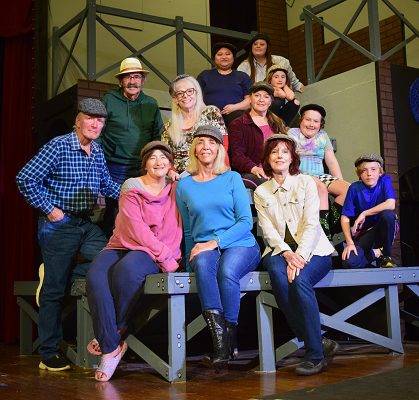Destitution row
“Giacomo Ceruti: A Compassionate Eye” at the Getty
by Bondo Wyszpolski

Ceruti wasn’t the first painter to depict the truly downtrodden; Carovaggio, La Tour, and the brothers La Nain had, so to speak, landed there ahead of him. However, Ceruti displayed something in his pictures of the poor that not many others had, and that was empathy.
This more or less sums up the title of the exhibition, “Giacomo Ceruti: A Compassionate Eye” which is on view from July 18 to Oct. 29 at the J. Paul Getty Museum.

The reason we’re talking about the poor, those minimally compensated, if at all, for their manual labor, and not the middle- or upper-middle class, is because the Getty show revolves around the so-called “Padernello cycle,” discovered near Brescia, in Lombardy, within the Salvadego family castle. Not surprisingly, there remain many unanswered questions, such as who commissioned these paintings (most of which are quite large) and why. Who would want to own this “Group of Beggars,” described here as “economically disadvantaged subjects”?
The trail meanders away, somewhat inconclusively, and plenty of ink is then diverted to discussions of poverty in Europe during Ceruti’s time. Roberta D’Adda and Davide Gasparotto (the latter also edited the catalogue) point out that “during the sixteenth century, on average the poor constituted at least one-fifth of the urban population of Western Europe.”
So, here we go: How were the indigent regarded? The same as today, here on the streets and in the parks of Los Angeles? Was there a social safety net? How effective was the Church is combating poverty?

For example, Lorenzo Coccoli provides a perhaps overly-detailed exploration of how poverty was perceived. Being poor didn’t necessarily mean camping under a freeway overpass; it could encompass those who were suddenly forced to subsist below their class standing. Therefore, a loss of reputation could have you being identified as “poor.” Let’s say, for instance, that Larry had been living in Pacific Palisades with a magisterial view of the ocean, but was abruptly compelled by a downturn in his fortunes to find a three-bedroom condo in Hermosa Beach. Larry would then be deemed poor, even though a three-bedroom condo near the beach might be considered the life of Riley by some or even most of us.

As you can see, we’ve drifted quite a ways from Giacomo Ceruti himself, and ultimately that’s where the focus needs to be. His pictures are touching, the subjects largely expressionless, and many simply look back at the viewer. I wouldn’t say that Ceruti is a major figure in the art world, and at times I wondered if he was edging too close to the sentimental, a death sentence in itself. But he doesn’t, and many of these portraits are touching, a quality I’m sure he wanted to convey.
The catalogue has a truly extensive bibliography, mostly in Italian and English, and then a list of past and relevant exhibitions, including numerous shows in Brescia and Milan, which were central to Ceruti’s life and art.
Giacomo Ceruti: A Compassionate Eye is on view through Oct. 29 at the J. Paul Getty Museum, 1200 Getty Center Drive, Los Angeles. More at getty.edu. PEN











